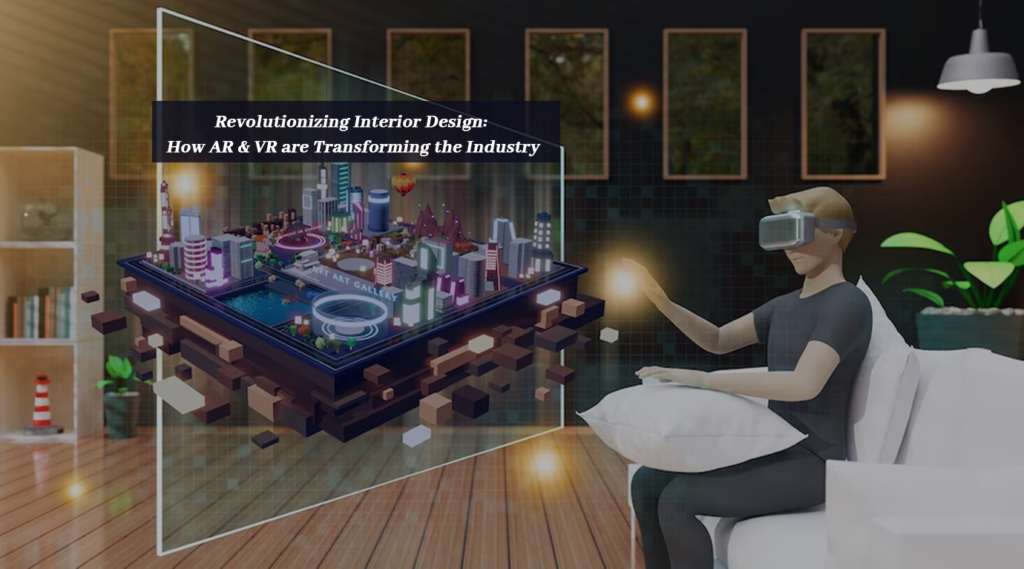


Revolutionizing Interior Design: How AR & VR are Transforming the Industry
Are you ready to step into a world where design dreams become vibrant, immersive realities? Say hello to the revolutionary duo that’s shaking up the interior design industry – Augmented Reality (AR) and Virtual Reality (VR). Strap on your digital goggles as we embark on an incredible journey through this game-changing technology, unveiling how AR and VR are transforming interior design like never before. Get ready for an electrifying fusion of imagination and innovation that will redefine the way we perceive spaces. Let’s dive right in and discover how these transformative tools are bringing fantasy visions to life!
Introduction to AR & VR in Interior Design
AR and VR are two of the most cutting-edge technologies in the interior design industry. By harnessing the power of these technologies, interior designers can create realistic, three-dimensional renderings of potential designs and allow clients to experience them firsthand.
This allows for a more immersive and interactive design experience, which can help to streamline the design process and ensure that everyone is on the same page. Additionally, AR and VR can be used to create virtual tours of finished spaces, allowing potential clients to get a realistic sense of what a space will look like before committing to it.
AR and VR are changing the landscape of interior design by making it more efficient and interactive. For anyone looking to get into the interior design industry or take their business to the next level, these technologies are definitely worth exploring.
Benefits of Virtual Reality for Home Designers
As interior designers continue to seek new ways to engage and inspire clients, many are turning to virtual reality (VR) technology. VR allows designers to immerse their clients in realistic, three-dimensional representations of proposed designs, giving them a true sense of how the space will look and feel.
Designers can use VR to create custom environments that would be otherwise impossible or too costly to build in physical form. This provides a unique opportunity for clients to explore and experiment with different design concepts in a way that is fun and interactive.
In addition to its engaging and immersive qualities, VR also has the potential to save designers time and money. Because VR simulations can be created relatively quickly and easily, they can be used as an alternative to traditional methods such as hand sketches or clay models.
The use of VR in home design is still in its early stages, but the potential benefits are already clear. As the technology continues to evolve, it is likely that VR will become an increasingly important tool for interior designers.
Augmented Reality Tools to Enhance Home Decor Visualization
As interior design increasingly moves online, many home décor companies are turning to augmented reality (AR) and virtual reality (VR) technologies to give their customers a more immersive experience. These tools allow users to see how furniture and other home decor items would look in their own space, without having to physically bring them into their home.
Some retailers, like Wayfair, have developed their own AR apps that let shoppers “try out” products in their own homes. Other companies, like Ikea, use VR to give customers a realistic view of what their products would look like in a completed room. These experiences can be extremely helpful for customers who are trying to visualize how a certain piece of furniture would fit into their space or what a particular color scheme might look like in their home.
While AR and VR technologies are still relatively new, they are quickly becoming more commonplace in the interior design industry. These tools have the potential to totally transform the way people shop for home decor, and make it easier than ever before to find the perfect pieces for your space.
Inventive Ways AR & VR Are Being Used In Interior Design
AR and VR are providing interior designers with new ways to view and present design concepts. Designers are using AR to create 3D models of their designs that can be viewed from any angle, and VR to give clients a virtual tour of a space before it is built.
These new technologies are changing the way interior designers work, and opening up new possibilities for creativity and collaboration. Below are some examples of how AR and VR are being used in interior design:
- Visualizing concepts: AR enables interior designers to see their designs in three dimensions, making it easier to visualize concepts and make changes.
Presenting to clients: AR and VR can be used to create realistic simulations of a space, giving clients a better understanding of the designer’s vision.
Collaborating with other designers: AR and VR can be used for collaborative design sessions, allowing designers to work together on a project from anywhere in the world.
- Experimenting with materials and finishes: AR and VR can be used to experiment with different materials and finishes, without having to purchase or install anything physically.
Planning construction projects: AR and VR can be used for construction planning, helping contractors visualize the finished space and identify potential problems.
Application of AR and VR Across Different Interiors
AR and VR are revolutionizing interior design by providing homeowners and designers with new ways to visualize spaces and make decisions. AR allows users to see how furniture and decor will look in their homes before they buy it, while VR provides a realistic, immersive way to experience different design concepts.
Applications of AR and VR are not limited to just interior design – they can be used for any type of design, including architecture, landscape design, event planning, and more. The possibilities are endless!
Tips for Utilizing Virtual Technology as a Tool for Interior Designers
As an interior designer, it is important to stay up to date with the latest trends and technologies in your field. Virtual technology is becoming increasingly popular in the design industry, as it allows designers to create realistic 3D renderings of their designs. Here are some tips for using virtual technology as a tool for interior designers:
- Use virtual technology to create realistic 3D renderings of your designs. This will allow you to better visualize your designs and make more informed decisions about colors, textures, and furniture placement.
Use virtual technology to communicate with clients and other stakeholders involved in the design process. This can help reduce misunderstandings and improve collaboration.
Use virtual technology to create interactive experiences for your clients. This can help them better understand your designs and give them a greater sense of ownership over the final product.
- Stay up to date with the latest virtual technology advancements in order to stay ahead of the competition. By keeping up with the latest trends, you will be able to offer your clients cutting-edge design solutions that they cannot find anywhere else
Conclusion
In conclusion, AR and VR are quickly revolutionizing the world of interior design. With these technologies, designers can create immersive 3D renderings that make it easier for clients to visualize their projects before making any purchase decisions. Furthermore, they allow users to access real-time data and information about design options in order to make informed decisions about their home or office space. The potential of AR and VR technology is truly limitless; what we have seen so far is only the beginning!
Popular Posts





